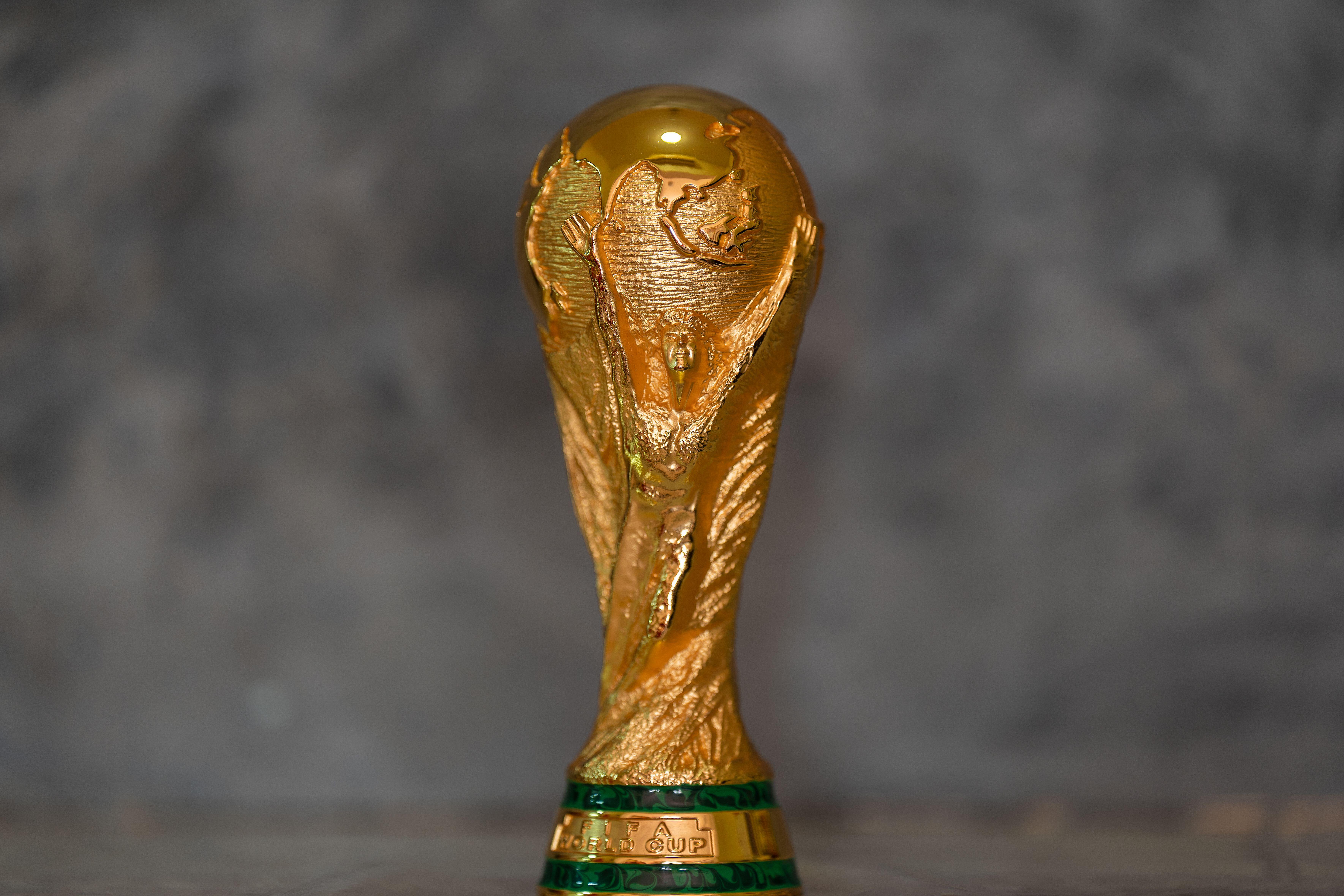Ranked! The 100 best stadiums in the world
The best stadiums in the world from all corners of the globe: this is your ultimate match-going bucket list
60. Craven Cottage
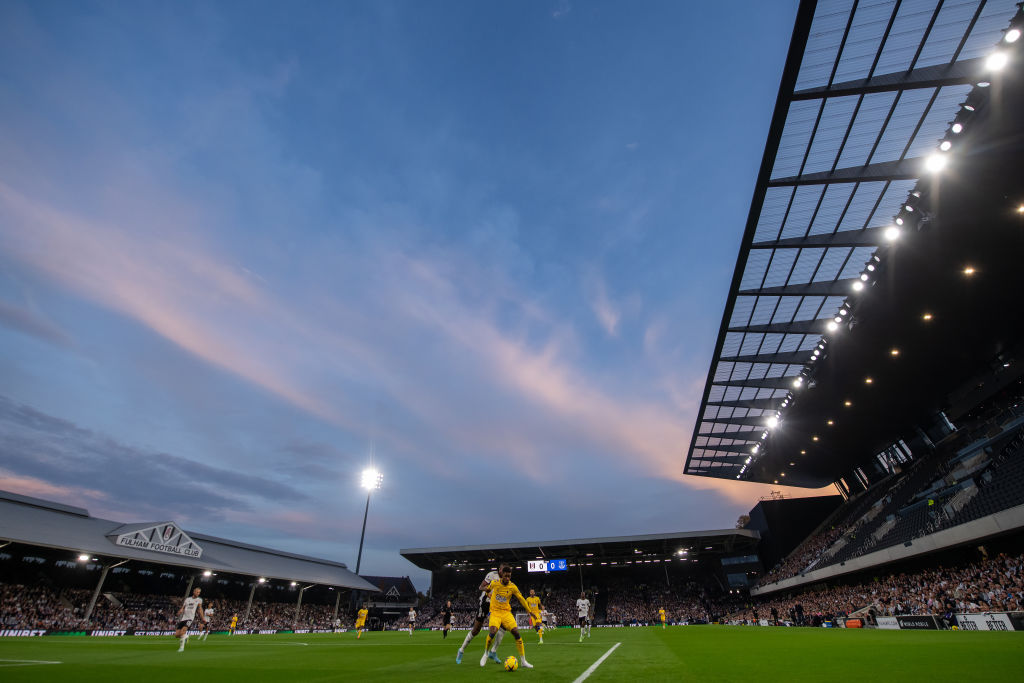
📍 London, England
🏠 1896
🏟 22,384
There’s no stadium quite like Craven Cottage. In an age where identikit bowls dominate, this is a piece of authentic Little England tucked away on the banks of the Thames in South West London. Coming out of Putney Bridge station, you pass independent eateries and one of London’s best second-hand bookshops, then into the tree-lined confines of Bishops Park, eventually emerging onto Stevenage Road.
It’s here that Fulham’s home since 1896 truly reveals itself. Fronting the oldest football stadium in the capital – the first ‘Cottage’ was built in 1780 and supposedly counts Sir Arthur Conan Doyle, Florence Nightingale and even Queen Victoria as former tenants – the redbrick façade of the Johnny Haynes stand is the typically beautiful work of prolific architect Archibald Leitch.
This stand, along with the titular Cottage nestled in the corner of the ground, is a Grade II listed building. Throw in the Riverside Stand, brilliant for a half-time drink looking over the Thames, and you’ve got a picture-perfect little ground. And no amount of Michael Jackson statues can change that. – AM
59. Rungrado 1st of May Stadium
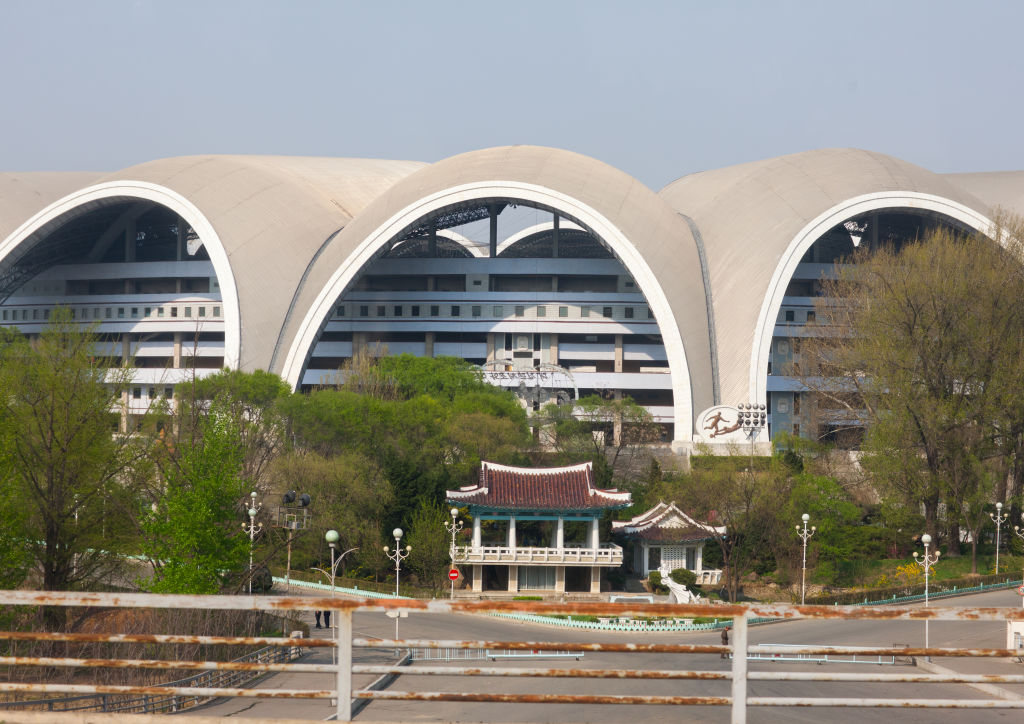
📍 Pyongyang, North Korea
🏠 1986
🏟 114,000
Few stadiums on this list are more famous for something other than football, but that’s forgivable when the Rungrado gets 150,000 people packed in for the amazing spectacle of the Arirang Mass Games. It opened in 1989 as the centrepiece of the World Youth Festival, a response to the 1988 Seoul Olympics. Inside the feeling is of a fairly standard (albeit very big) Soviet-style bowl with some local touches such as 16 arches that make up the roof, designed to create the image of a parachute in flight.
Where it really impresses, however, is on the approach from the Taedong River and the massive outer shell which dominates the neighbourhood. Some visitors have unfairly labelled it 'The Veruca' due to its design, but that sells short a stadium which aims for a powerful impact – and certainly delivers. – JD
Get FourFourTwo Newsletter
The best features, fun and footballing quizzes, straight to your inbox every week.
58. Luzhniki Stadium
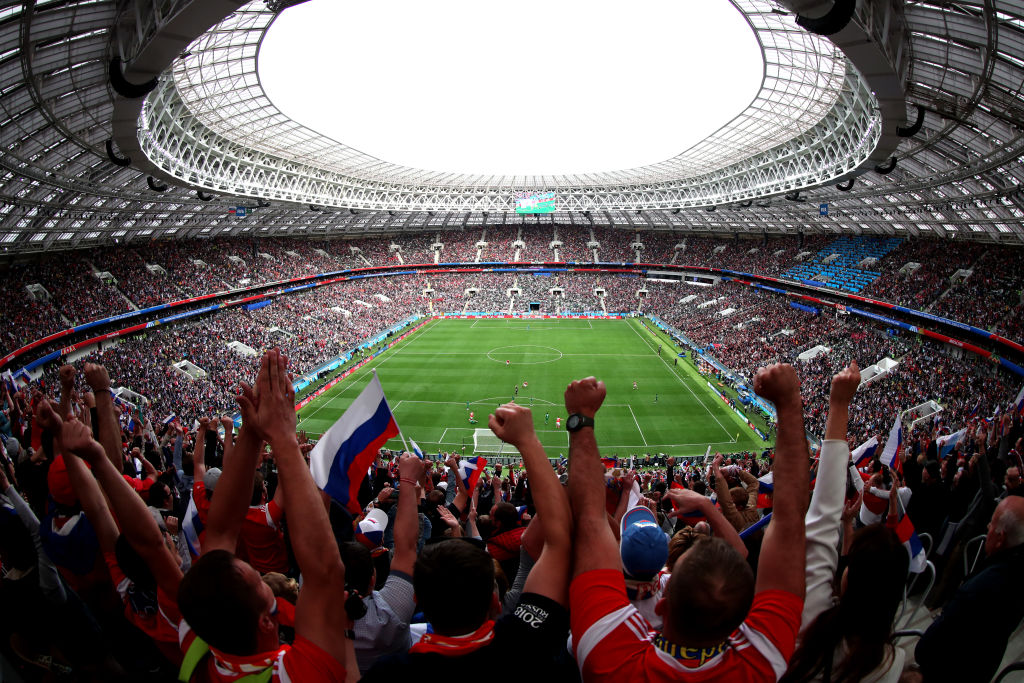
📍 Moscow, Russia
🏠 1955
🏟 81,000
Luzhniki translates roughly to "The Meadows". It's a bucolic name for a rather monstrous concrete and metal structure, which Vladimir Putin last used to hold a rally to draw support for his nation's invasion of Ukraine.
Plenty of sporting misery has happened there, too. John Terry's fatal slip in the 2008 Champions League final; England's Croatian collapse in the 2018 World Cup semi; Russia pummelled Saudi Arabia and sucker-punching Spain on penalties that summer; everyone who put a pound on there being a goal in every group game of that VAR-happy tournament, only for Denmark and France to let the side down. As a venue itself, the Luzhniki Stadium is colossal, with great views from every angle – but as the French who partied on the pitch in the aftermath of their second title in '18 know all too well: it's hosted a fair few rainy days over the years. – MW
57. Volksparkstadion
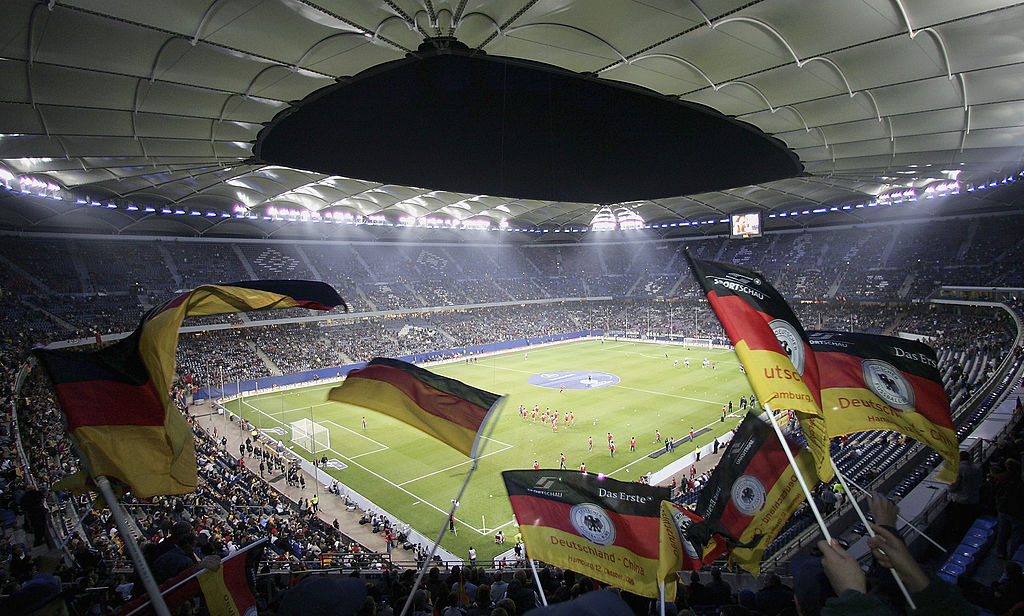
📍 Hamburg, Germany
🏠 1953
🏟 57,000
It says on the tin that Hamburg’s Volksparkstadion was opened in 1953, but in truth, today’s current incarnation is little more than two decades old. When the ‘People’s Stadium’ was ‘renovated’ in 1998, the old ground – which had hosted games at World Cup 1974 and the Euro 88 semi-final between West Germany and the Netherlands – was knocked down completely to make way for a shiny new €95m arena fit for hosting matches at the 2006 World Cup.
In turn, one of Germany’s proudest clubs inherited one of the finest grounds in the world. Not bad for a ground which wasn’t even built for Hamburg in the first place – Der Dino (the Dinosaurs) moved in 10 years after it was built when they joined the newly formed Bundesliga in 1963. – JB
56. Estadio Gigante de Arroyito
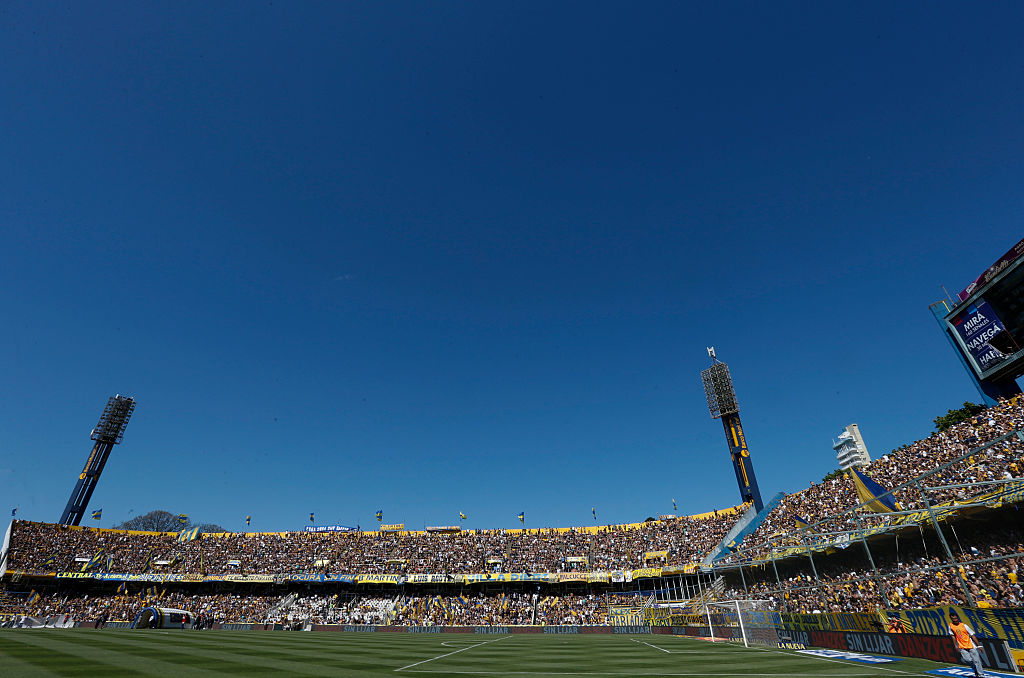
📍 Rosario, Argentina
🏠 1926
🏟 41,465
By no means the biggest stadium in our list, but boy does this place come alive with noise. Situated hard by the Parana river that flows south toward Buenos Aires, it’s a vibrant place – in 2008 the “green moss” coloured seats were eye-catchingly painted in the club’s blue-and-yellow livery – and difficult for opponents to visit: despite not being one of the big five in Argentina, Rosario Central have lost just seven of their last 45 games top-flight games there (up to November 2015).
Steeped in history, the Estadio Dr Lisandro de la Torre (officially, both the barrio and ground are named after a popular politician) hosted Argentina during the second phase of the 1978 World Cup. It was a happy return for Rosario old boy Mario Kempes, who bagged four in three games there en route to personal and national glory – he won the Golden Boot as Argentina won the World Cup. – JF
55. Estadio Ramon Sanchez Pizjuan
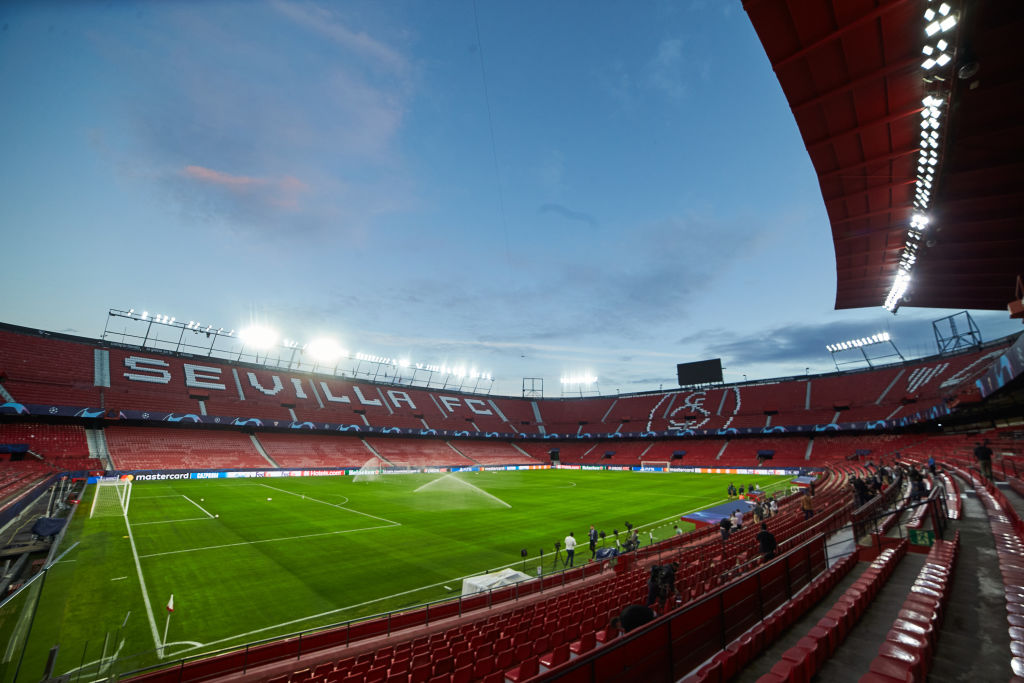
📍 Seville, Spain
🏠 1958
🏟 42,714
For much of its duration the journey to Sevilla’s home isn’t anything special. Walking along Avenida de San Francisco Javier offers little more than concrete housing and glass-fronted offices. Then, turn right into an inconspicuous shopping complex, walk out from under an archway, and it hits you: the 480sq.m. mural which adorns the western exterior of the Ramon Sanchez Pizjuan.
The Sanchez Pizjuan seems to breathe with its supporters, the rumbling of the advertising boards at the back of the stands and crunching of sunflower seeds underfoot combining with endless singing to create one of the best atmospheres in Europe. – LR
54. Rose Bowl
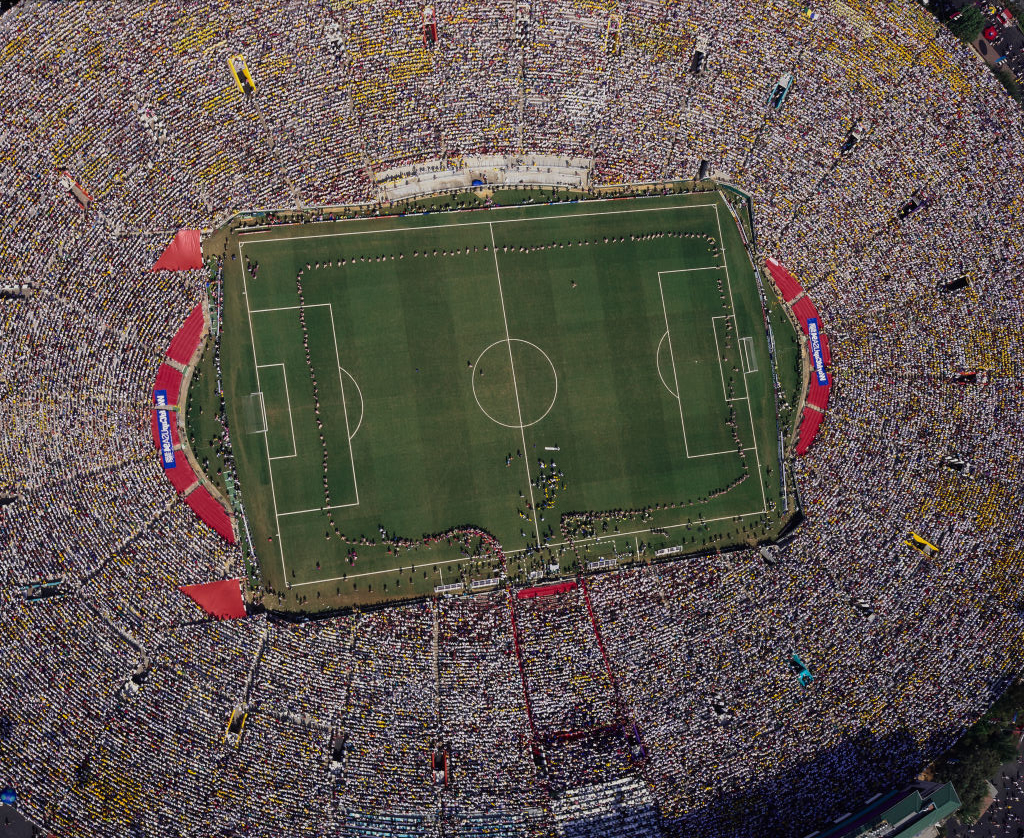
📍 Pasadena, United States
🏠 1922
🏟 92,542
American architecture has a different hierarchy to the Old World, but by any standards the Rose Bowl is a grand old stadium. A US National Historic Landmark finished the year before Wembley first opened, it’s a vast coliseum of a place capable of packing them in.
In some ways its size counts against it: although the NASL’s Los Angeles Wolves and MLS outfit LA Galaxy have been tenants, they understandably struggled to fill it. It was built for, and ended up giving its name to, the huge events which came to be known as “bowl games” (Super Bowl, etc); it also hosted the finals of two World Cups (1994 men’s, 1999 women’s) and the 1984 Olympics football tournament. – KH
53. Estadio Jose Alvalade
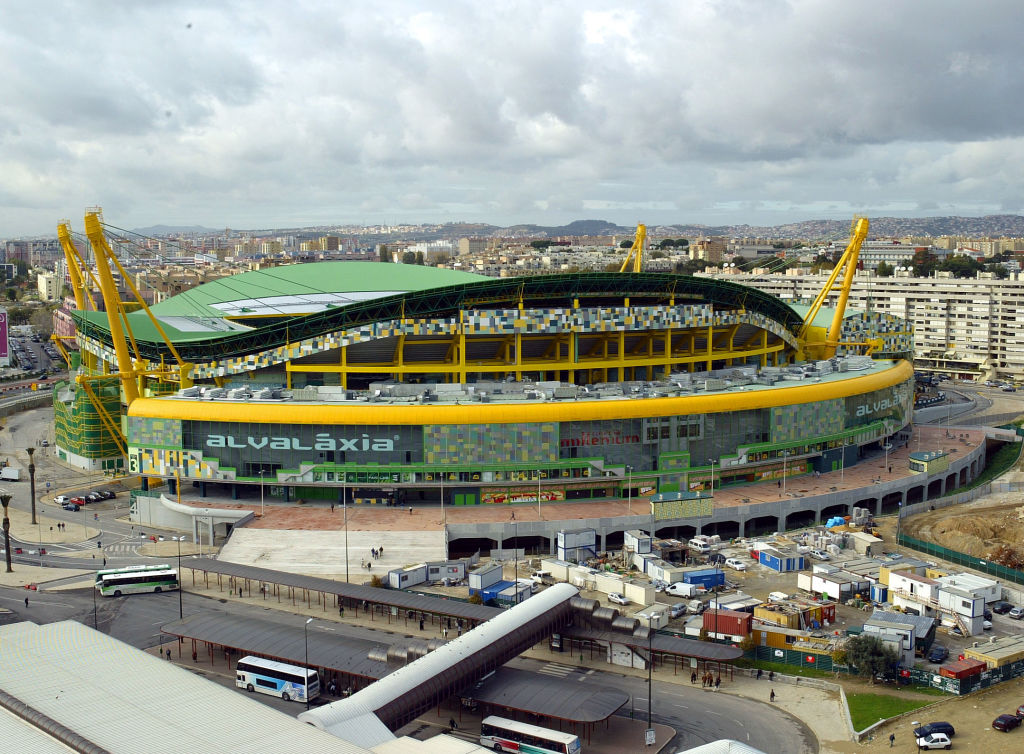
📍 Lisbon, Portugal
🏠 2003
🏟 50,095
Lisbon’s Jose Alvalade stadium is big on aesthetics. A mosaic multi-coloured design runs through the whole complex, inside and out, bar the green-painted undulating single roof supported at each of the four corners by cables streaming down from massive metal pillars piercing far into the sky. The stadium’s inaugural match on 6 August 2003 proved a famous occasion, with the hosts beating Manchester United 3-1 in a pre-season friendly and an 18-year-old Cristiano Ronaldo putting in a mesmerising performance that would persuade Alex Ferguson to take the Portuguese magician back with him to Old Trafford. – TK
52. Sangam Stadium
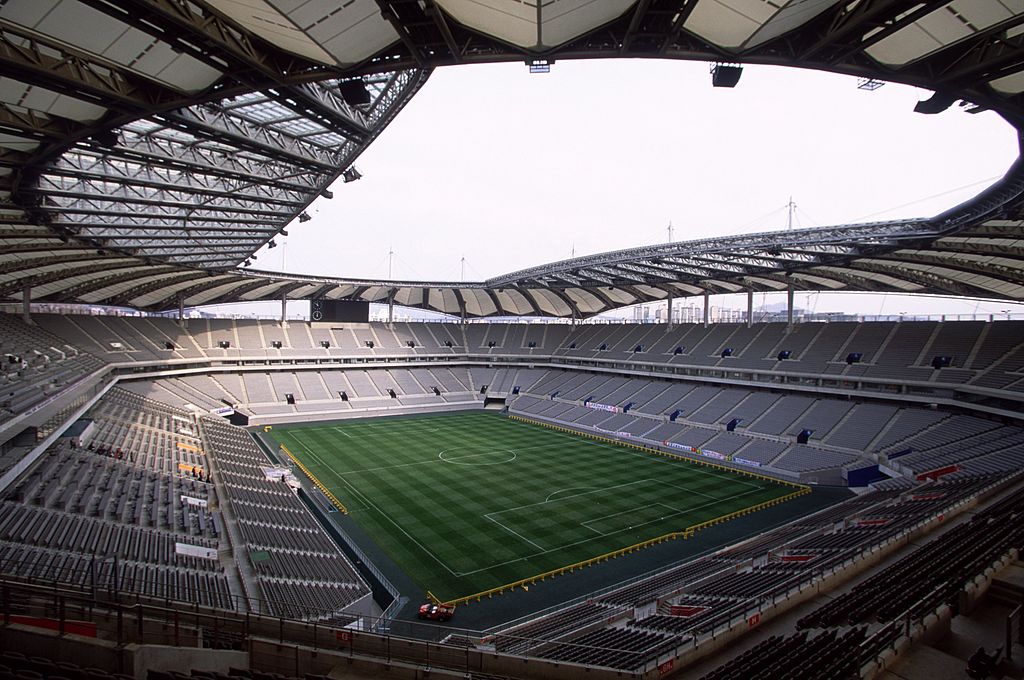
📍 Seoul, South Korea
🏠 2001
🏟 66,704
It may be built on an old rubbish tip but there’s nothing trashy about this stadium on the banks of the mighty Han River and overlooking the world's highest fountain. Alex Ferguson waxed lyrical about it in 2009 and the image of Papa Bouba Diop dancing round the Senegal shirt in that opening game of the 2002 World Cup still sizzles on the French football psyche.
Modern, futuristic even but with a nod to the past and a design said to be based on traditional Korean kites, the stadium layout keeps the fans close to the pitch and the sightlines – so the experts say – are perfect from each of the 66,000 seats in the football-only arena. When it’s full and South Korea are on form, the atmosphere can be something special – and even if it isn't, you can escape to a state of the art cinema, a massive supermarket, get married or go to a 2002 World Cup museum. – JD
51. San Mames
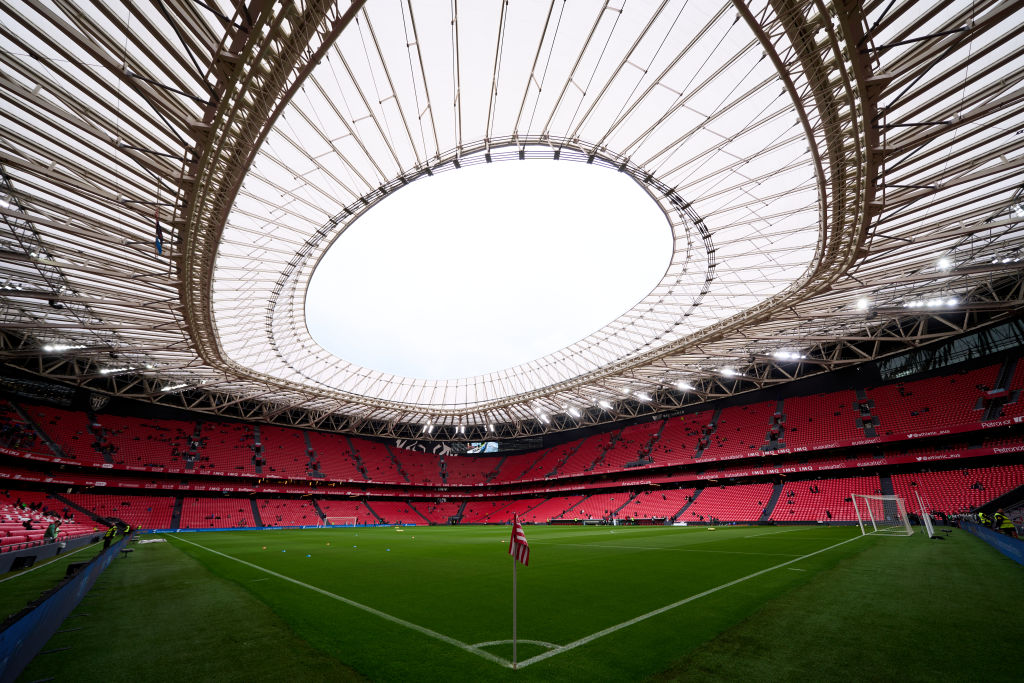
📍 Bilbao, Spain
🏠 2013
🏟 53,331
If you’re going to knock down the country’s oldest and most revered stadium, you’d better make sure you make a good job of the new one. Thankfully the new San Mames – named after a nearby church of the same name – is every bit as impressive as the magnificently intimate original, nicknamed The Cathedral.
What makes this £136m 2013 update unique – a little more than the £216 paid for the original in January 1913 – is its position within the city. Lying on the banks of the Nervion River, San Mames is Bilbao’s beating heart, gridiron arterial streets expanding out across the one-club city. Walk along Calle de Rodriguez Arias or Poza Lizentziatuaren Kalea and the ground stands proud at the end.
Home to friendlies played by the Basque Country’s unofficial national team, San Mames is the physical representation of a people. – AM
Current page: The 100 best stadiums in the world: 60-51
Prev Page The 100 best stadiums in the world: 70-61 Next Page The 100 best stadiums in the world: 50-41
Mark White has been at on FourFourTwo since joining in January 2020, first as a staff writer before becoming content editor in 2023. An encyclopedia of football shirts and boots knowledge – both past and present – Mark has also represented FFT at both FA Cup and League Cup finals (though didn't receive a winners' medal on either occasion) and has written pieces for the mag ranging on subjects from Bobby Robson's season at Barcelona to Robinho's career. He has written cover features for the mag on Mikel Arteta and Martin Odegaard, and is assisted by his cat, Rosie, who has interned for the brand since lockdown.
